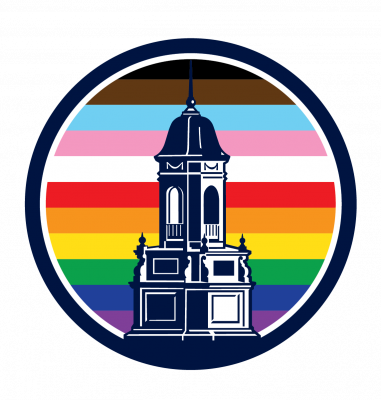Today’s post comes from the Early Modern Studies Working Group’s Co-Coordinator, Melissa Rohrer. Melissa is a PhD Candidate in the English Department.
In October of 2018, I visited the Folger Shakespeare Library with generous funding from the UConn Early Modern Studies Working Group and the University of Connecticut Humanities Institute. My dissertation investigates how playwrights of the early modern period adapted notorious true events for the stage—events such as true crimes and scandals. I already had access to the plays which adapted these events, so I my trip to the Folger was centered largely on learning more about how these events were understood, circulated, and commented upon, both at the time of their unfolding and in the centuries after they transpired.
The archival materials I investigated during this trip centered on a scandal known as the Overbury Affair, a bizarre murder conspiracy that unfolded between 1613 and 1616 and which implicated one of the most powerful royal couples in King James I’s court. Sir Thomas Overbury died in 1613 while imprisoned in the Tower of London, and two years later it came to light that he had been murdered at the behest of the Countess of Somerset. Enraged that Overbury had tried to thwart her marriage, the Countess (Lady Frances Carr née Howard) enlisted several co-conspirators of lower birth to poison him during his imprisonment; though poison was slipped into several tarts and jellies sent to Overbury, a poison-laced enema is what eventually killed him. The revelation that Overbury had been murdered caused an uproar in both in the royal court and in larger society; Robert Carr, the Earl of Somerset, was James I’s great favorite, and it was unclear to what extent Carr—or even the King himself—were complicit in the murder. Large crowds turned up to attend the trials of all who were associated with the conspiracy, and transcripts of these proceedings were circulated contemporaneously in manuscript.

The first part of my research was examining some of these manuscript copies, particularly those which transcribed the arraignments of Frances Howard’s co-conspirators: Richard Weston (an assistant jailor), Anne Turner (Howard’s confidante), and Gervase Helwys (Lord Lieutenant of the Tower). These manuscripts demonstrate contemporary interest in the court proceedings, which could not be published and so were circulated via manuscript. Whoever transcribed these documents took great care to recreate these arraignments as closely as possible. For example, the manuscript of Anne Turner’s arraignment includes a word-for-word copy of a letter Frances Howard sent to Turner, including the instructions “Burne this.” Transcripts such as these acted as a kind of news report about the trial, and for those who could read or copy them, it was the best way access the real accusations against and confessions of those who were involved in the Overbury Affair.

During my time at the Folger, I also examined the 1651 quarto, A True and Historical Relation of the Poysoning of Sir Thomas Overbury, With the Severall Arraingments and Speeches of those that were executed thereupon. This tract was published at the close of the English Civil War, when it was no longer prohibited to publish content that presented a critical view of the monarchy and aristocracy. Without these restrictions, the pamphlet gathered together a multitude of official and legal documents—such as arraignments, confessions, and royal speeches—concerning both Overbury’s murder and the divorce Frances Howard orchestrated in order to marry Robert Carr. While the materials included in this pamphlet include no commentary by the compiler, the original owner of the Folger’s copy made several comments and corrections in the margins. These marginal comments are what make this pamphlet useful to my project, as they demonstrate how ordinary citizens engaged with the scandal of Overbury’s murder. The owner’s careful correction of errors suggest that the scandal was still well-known nearly 40 years after it occurred, and his comment of “preposterous” alongside an opinion given by King James in Frances Howard’s divorce trial suggests that ill feeling about the scandal and its participants still lingered in the public consciousness.

I spent the rest of my research time looking at various other materials related to the Overbury Affair, including responses to the scandal written centuries after Overbury was murdered. I transcribed a handwritten theater review, supposedly written by David Garrick, for the 1777 production of Sir Thomas Overbury: A Tragedy by Richard Savage. My dissertation is largely concerned with scandals that were adapted for dramatization in the sixteenth and seventeenth centuries, but Savage’s play and Garrick’s review of it indicate that these scandals remained relevant and of interest to theater audiences over a hundred years after they occurred. A similar interest inspired Andrew Amos to write his 1846 book, The Great Oyer of Poisoning: The Trial of the Earl of Somerset for the Poisoning of Sir Thomas Overbury. Amos is one of the first writers to treat the Overbury Affair as a subject of significant legal and scholarly inquiry, and his book remains an important source on the trials for historians and legal scholars.
In their own way, all these materials hint at the lingering impact scandals can have on a society and its culture. We may think of scandals as phenomena of the moment, events which inspire outrage while current, but which fade from importance once resolved. My study of the Folger’s holdings which relate to the Overbury Affair suggest that this is not the case; scandals can linger in a society’s collective memory for many years, serving as cultural touchstones and points of societal self-reflection. As our own society looks back on the scandalous crimes of the 1990s and adapts these events into movies and television dramas (American Crime Story: The People vs. OJ Simpson, Casting JonBenet, Lorena, Law & Order True Crime: The Menendez Murders), we can look back on the Overbury Affair and its legacy in seventeenth- and eighteenth-century culture for an important precursor.










